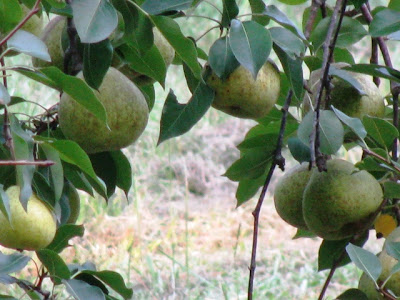Today is a day off from work and as is usual, I am spending it in the garden. While gathering up a dead shrub I happened to glance down at a nearby baptisia and spotted three prickly looking caterpillars that I had not seen in the garden before. Hmmmm, I have several baptisias and some have been eaten to the stems so this caterpillar interested me. Not the mention that after my encounter with a prickly saddleback caterpillar I am very wary of prickly caterpillars in the garden. Prickly caterpillars can sting you severely so it is always best to leave them alone!! I kept my distance, took a few pictures and got on my computer to try to identify these caterpillars.
I am not good at identifying caterpillars or even butterflies for that matter, but there is a handy site called Caterpillars that has a link to a BuGGuide where you can look up what seems like millions of pictures of caterpillars and hopefully get an identification. Bingo! It only took me going through about 50 pictures before I found my caterpillar. It seems it is an instar of the Automeris moth.
The Automeris moth is a common moth of North America and one of its host plants is baptisia. These caterpillars in the above picture appear to be an early instar. The caterpillars of the Automeris go through five changes (instar stages) before they begin their metamorphosing into a cocoon to turn into a moth.
I think the little caterpillars were a neat find in the garden but I am ever so grateful I did not brush up against these caterpillars because, not surprisingly, the prickly hairs STING! If you have never had the misfortune of brushing up against a stinging caterpillar such as these or the saddlebacks I can describe the pain for you. It is instantaneous and feels like someone poured burning water on your skin. The skin will turn red and look like it is burned. The pain will usually subside in a few days but I promise you won't ever forget the experience so beware when spotting new caterpillars....
in the garden....
Words and Photos Property of In the Garden Blog Team, In the Garden





























 With the large oak tree gone, more sunlight hits the garden. Therefore, I had to move the hosta as they were burning up from the sunshine and extreme heat we had this summer.
With the large oak tree gone, more sunlight hits the garden. Therefore, I had to move the hosta as they were burning up from the sunshine and extreme heat we had this summer.  The Elvis Lives Hosta lasted longer then any but as you can see, he has also started to burn. He must be moved out of this garden as well. This will make the 3rd time I have moved poor Elvis. He keeps trying to die on me. Click
The Elvis Lives Hosta lasted longer then any but as you can see, he has also started to burn. He must be moved out of this garden as well. This will make the 3rd time I have moved poor Elvis. He keeps trying to die on me. Click 




 Same view in Summer. Notice the darkness of the woods as they are thicker now then Spring. Also the added canopy to keep the heat and sun off the patio. Self seeding plants now blooming. I do miss the shade from that huge missing oak tree, sigh.
Same view in Summer. Notice the darkness of the woods as they are thicker now then Spring. Also the added canopy to keep the heat and sun off the patio. Self seeding plants now blooming. I do miss the shade from that huge missing oak tree, sigh.



 A beautiful Bloom of a Shoot indeed! There are a lot of whimsical items in this garden but they are currently hidden by the tall plants. They show during the winter months when most of the plants are dormant, thus keeping this garden full of interest year round.
A beautiful Bloom of a Shoot indeed! There are a lot of whimsical items in this garden but they are currently hidden by the tall plants. They show during the winter months when most of the plants are dormant, thus keeping this garden full of interest year round.